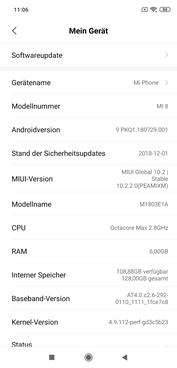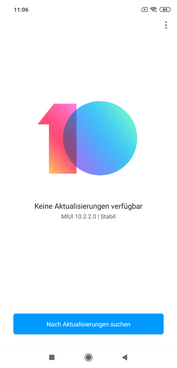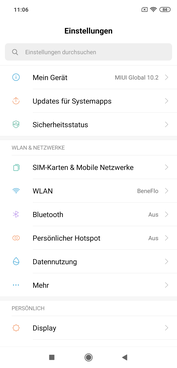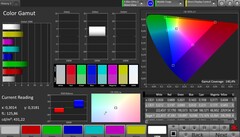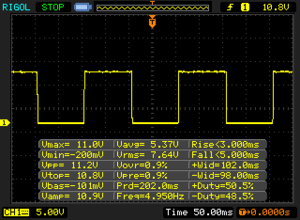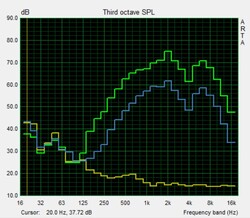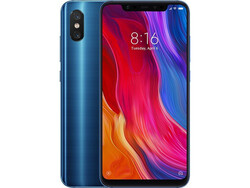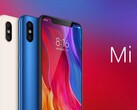Xiaomi Mi 8 Smartphone Review
A few months after reviewing the Xiaomi Mi 8 Explorer Edition, the imported version of the Mi 8, the official edition deemed for the West became available as well. It features a ‘western’ flavor of Android, a larger battery, but lacks the semi-transparent rear cover. And while the Mi 9 may be imminent, the Mi 8 is still Xiaomi’s current flagship smartphone. Time for an additional test of the ‘western’ version thereof.
On the surface, the Mi 8 looks and feels like a typical 2018 high-end smartphone. It is equipped with a Snapdragon 845 and features a notch at the front and a dual-camera at the rear. However, at just slightly over $400, it remains a very affordable flagship smartphone. The line-up of its main competitors reads like the crème de la crème of last year’s premium devices: the OnePlus 6T, the Sony Xperia XZ3, and the Samsung Galaxy S9. We have also decided to include the Mi 8 Explorer Edition to get an idea of how the two models differ.
Case
The case is pretty standard for a modern high-end smartphone. It features Gorilla glass at both, front and the back, which makes for a classy look and a significantly better cellular reception when compared to a metal case. At the same time it renders the case slippery and incredibly susceptible to fingerprints and smudges. The Mi 8 is available in three colors: black, blue, and white. We should note though that the bezels around the display are always black regardless of the choice of color as it only impacts the rear cover and the metal frame surrounding the body.
While the case is very robust overall, we were able to warp it ever so slightly when applying torsional force to it. According to JerryRigEverything, who conducted a torture test on the Mi 8 Explorer Edition, the device does not bend permanently and cannot be broken in half even when subjected to enormous forces. We expect the regular Mi 8 to perform identically. Applying pressure to the front or the back of the device had absolutely no effect on it whatsoever.
At 175 g (~6.2 oz), the Xiaomi Mi 8’s weight is average.
Connectivity
The Mi 8 has less RAM than the Explorer Edition: 8 vs. 6 GB. This, however, should not be noticeable unless you are running either a very high number of apps simultaneously or highly demanding apps. Most users will not notice a difference.
For a high-end smartphone, 128 GB of storage space is still decent. We should note though that the Mi 8 does not have a card reader slot, and memory can thus not be upgraded.
At the bottom we find a single USB-C port connected to a USB 2.0 bus. It supports USB-OTG and is also the only audio-out port on the entire device. Supported wireless communication protocols include, among others, NFC and Bluetooth 5.0.
Software
Xiaomi’s custom Android skin is called MIUI, and the most recent version 10 is based on Android 9. The original Mi 8 shipped with Android 8.1. The translation was very good overall, and we failed to notice any English or even Chinese artifacts and leftovers forgotten by the developers. Security patches were as of December 2018 and should better be updated soon.
Xiaomi includes a number of apps, among others Facebook and a large number of in-house tools. Some apps copy what Google’s default apps do, such as the music app or the web browser. These preloaded apps cannot be uninstalled.
Communication and GPS
LTE Cat. 16 is still state of the art for a high-end smartphone, and it offers download speeds of up to 1 Gbps. Some high-end smartphones, such as the Galaxy S9, are even a bit faster. Cellular reception in an urban environment was decent both indoors and outdoors.
The Mi 8 supports all current Wi-Fi standards and achieved decent transfer rates when connected to our Linksys EA8500 reference router. That said, it was still slower than all of its competitors in our test group, including the Explorer.
| Networking | |
| iperf3 transmit AX12 | |
| Xiaomi Mi 8 Explorer Edition | |
| Samsung Galaxy S9 | |
| Sony Xperia XZ3 | |
| OnePlus 6T | |
| Xiaomi Mi 8 | |
| iperf3 receive AX12 | |
| Samsung Galaxy S9 | |
| OnePlus 6T | |
| Sony Xperia XZ3 | |
| Xiaomi Mi 8 Explorer Edition | |
| Xiaomi Mi 8 | |
One of the Mi 8’s features is a dual-frequency GPS modem that is supposed to increase GPS accuracy. We failed to notice anything indoors and had trouble using location services even when standing at the window. Outdoors GPS lock was obtained very quickly, albeit accuracy remained comparatively poor.
We take every smartphone on a bike tour around the block to determine GPS accuracy in a real-world usage scenario. Overall, the results were neither here nor there. Compared to the professional Garmin Edge 520 satnav, the Xiaomi Mi 8 was fairly accurate overall when recording the track, however it also tended to cut corners and bends. In other words: if high accuracy is of importance to you the Mi 8 may not be the best choice. For those with more moderate requirements the device is definitely usable for occasional GPS navigation. The compass turned out to be fairly precise in terms of direction, although once again its positioning was not particularly accurate.
Telephony and Call Quality
At the time of writing, Xiaomi did not support VoWiFi. VoLTE, on the other hand, had to be manually activated by dialing *#*#86583#*# and requires support by your provider and plan. By default, the phone uses a Xiaomi dialer instead of Google’s default telephone app to make phone calls. Its home screen contains your contacts as well as a dialpad with which you can search your contacts T9-style. If you want to perform a regular search instead, you can use the search bar. The app supports favorites and a few additional settings, such as automatically answering incoming phone calls.
Call quality was decent, and the earphone remained very clear with just minor noise even on maximum volume. The microphone worked equally well regardless of sound level. On speakerphone, we were able to hear our conversational partner loud and clear. Unfortunately, our microphone was fairly quiet and we had to speak up in order to be heard.
Cameras
The high-resolution front-facing selfie camera features a 20 MP sensor. The camera software supports a portrait mode with blurry backgrounds and additional lighting effects, and it worked fairly well in good light and with unicolored backgrounds. Regular photos were colorful and sharp. However, we suggest limiting yourself to good lighting in order to retain sharpness as it deteriorated rather quickly with fading light.
The main camera at the back features two 12 MP lenses with different focal lengths and thus an optical zoom. Photos taken with this camera were of high quality, although they failed to meet the high standards of other premium-class smartphones. For example, the iPhone XS Max showed a much higher dynamic range and more details. The LED flash does an acceptable job in poor light, however it, too, pales in comparison with other high-end smartphone cameras.
The rear-facing camera is capable of recording videos in 4K at 30 FPS, which is no longer state of the art for a premium smartphone, and neither is its slow-motion mode of just 120 FPS at 1080p. Nevertheless, the camera recorded decent enough videos with good sound quality.
More comparison photos can be found in our Mi 8 Explorer Edition review, which had the exact same camera.
When taken into our lab and tested under controlled conditions the main camera turned out to capture colors slightly overexposed. Our test chart photo was acceptable with a light weakness for black texts on red backgrounds. The photos were not as crisp around the edges as they were in the center, and we noticed minor chromatic aberrations in the top-left corner.
Accessories and Warranty
Even though the Mi 8 already supports Quick Charge 4+, Xiaomi has opted to include a Quick Charge 3 power supply. We also found a silicone bumper and a USB-C to 3.5-mm headphone jack dongle.
Given that Xiaomi does not officially sell its devices in the US or Canada, you cannot expect any form of official manufacturer warranty and are thus limited to dealer warranties if available.
Input Devices and Handling
By default, the Mi 8 uses Google’s Gboard keyboard application, which allows for fast and reliable text input. Other keyboards can be easily installed retroactively. The touchscreen was very pleasant to use and accurate up to its edges.
At the rear we find a fast and reliable fingerprint reader instead of the Explorer’s in-display-sensor that albeit more modern, was at the same time less accurate.
Another way to unlock the Mi 8 is face detection. However, it seems to be limited to certain countries. For example, it was not available when we selected Germany in our region settings, but showed up when we switched to India. The infrared face detection camera is simpler than the 3D depth detection camera on the Explorer Edition. In return, it was slightly faster and seemingly also more accurate, and even worked in total darkness thanks to its infrared sensors.
Hardware buttons are limited to a volume rocker and a standby button. They were easy to use and very precise.
Display
The AMOLED display is identical to the Explorer Edition's with the same slightly-higher-than-FHD resolution and a maximum brightness of 434 nits. Its performance was good enough to secure a place somewhere in the middle surrounded by its competitors. The OnePlus 6T’s display was similarly bright with a resolution that was only higher because of its smaller notch. The Galaxy S9 and XZ3 feature higher-resolution displays. In return, the Mi 8’s display offers support for HDR-10 and a better and more uniform brightness distribution, even better than the Explorer Edition's.
| |||||||||||||||||||||||||
Brightness Distribution: 94 %
Center on Battery: 430 cd/m²
Contrast: ∞:1 (Black: 0 cd/m²)
ΔE ColorChecker Calman: 5.09 | ∀{0.5-29.43 Ø4.77}
ΔE Greyscale Calman: 3.3 | ∀{0.09-98 Ø5}
140.4% sRGB (Calman 2D)
Gamma: 2.257
CCT: 7026 K
| Xiaomi Mi 8 AMOLED, 2248x1080, 6.2" | OnePlus 6T Optic AMOLED, 2340x1080, 6.4" | Xiaomi Mi 8 Explorer Edition Super AMOLED, 2248x1080, 6.2" | Samsung Galaxy S9 Super AMOLED, 2960x1440, 5.8" | Sony Xperia XZ3 OLED, 2880x1440, 6" | |
|---|---|---|---|---|---|
| Screen | 24% | 10% | 37% | -10% | |
| Brightness middle (cd/m²) | 430 | 437 2% | 429 0% | 529 23% | 543 26% |
| Brightness (cd/m²) | 434 | 442 2% | 432 0% | 527 21% | 542 25% |
| Brightness Distribution (%) | 94 | 95 1% | 88 -6% | 96 2% | 92 -2% |
| Black Level * (cd/m²) | |||||
| Colorchecker dE 2000 * | 5.09 | 2.21 57% | 3.39 33% | 1.4 72% | 6.6 -30% |
| Colorchecker dE 2000 max. * | 8.05 | 4.27 47% | 5.25 35% | 4 50% | 11 -37% |
| Greyscale dE 2000 * | 3.3 | 2.1 36% | 3.3 -0% | 1.6 52% | 4.7 -42% |
| Gamma | 2.257 97% | 2.307 95% | 2.238 98% | 2.16 102% | 1.835 120% |
| CCT | 7026 93% | 6353 102% | 7135 91% | 6358 102% | 6817 95% |
* ... smaller is better
Screen Flickering / PWM (Pulse-Width Modulation)
| Screen flickering / PWM detected | 238 Hz | ||
The display backlight flickers at 238 Hz (worst case, e.g., utilizing PWM) . The frequency of 238 Hz is relatively low, so sensitive users will likely notice flickering and experience eyestrain at the stated brightness setting and below. In comparison: 53 % of all tested devices do not use PWM to dim the display. If PWM was detected, an average of 8081 (minimum: 5 - maximum: 343500) Hz was measured. | |||
Thanks to the underlying AMOLED technology black pixels are disabled individually and the resulting contrast ratio is infinite. Colors pop, and the display can be individually adjusted to your liking with either automatic or enhanced contrast and white balance settings available.
When analyzed under controlled conditions in our lab using a spectrophotometer in combination with CalMAN we discovered a minor blue tint. Xiaomi promises full DCI-P3 coverage, a claim we can definitely confirm.
Display Response Times
| ↔ Response Time Black to White | ||
|---|---|---|
| 8 ms ... rise ↗ and fall ↘ combined | ↗ 3 ms rise | |
| ↘ 5 ms fall | ||
| The screen shows fast response rates in our tests and should be suited for gaming. In comparison, all tested devices range from 0.1 (minimum) to 240 (maximum) ms. » 21 % of all devices are better. This means that the measured response time is better than the average of all tested devices (20.2 ms). | ||
| ↔ Response Time 50% Grey to 80% Grey | ||
| 10 ms ... rise ↗ and fall ↘ combined | ↗ 5 ms rise | |
| ↘ 5 ms fall | ||
| The screen shows good response rates in our tests, but may be too slow for competitive gamers. In comparison, all tested devices range from 0.165 (minimum) to 636 (maximum) ms. » 22 % of all devices are better. This means that the measured response time is better than the average of all tested devices (31.6 ms). | ||
On overcast days, the device remained usable outdoors, even on medium brightness. On sunny days the reflections quickly took over and it became much harder to use. We would definitely suggest finding a shady spot.
As expected of an AMOLED display the viewing angles were excellent with only minor color distortions.
Performance
The Snapdragon 845 is a very common SoC for 2018 high-end smartphones. Despite the fact that the Explorer Edition featured the same SoC with more RAM, the Mi 8 turned out to be faster in some benchmarks. The most likely reason for this is a different throttling behavior, as we were able to determine in our sustained load test. More on this issue later. Either way, the differences were minute and certainly not noticeable. Generally speaking, the Mi 8 performed as expected for its hardware and class, and was very smooth and fast in most situations.
The GPU is an Adreno 630 with support for all modern APIs. It should have more than enough power for all current games.
| PCMark for Android | |
| Work performance score (sort by value) | |
| Xiaomi Mi 8 | |
| OnePlus 6T | |
| Xiaomi Mi 8 Explorer Edition | |
| Samsung Galaxy S9 | |
| Sony Xperia XZ3 | |
| Average Qualcomm Snapdragon 845 (7998 - 13211, n=26) | |
| Work 2.0 performance score (sort by value) | |
| Xiaomi Mi 8 | |
| OnePlus 6T | |
| Xiaomi Mi 8 Explorer Edition | |
| Samsung Galaxy S9 | |
| Sony Xperia XZ3 | |
| Average Qualcomm Snapdragon 845 (7360 - 9868, n=27) | |
| AnTuTu v7 - Total Score (sort by value) | |
| OnePlus 6T | |
| Xiaomi Mi 8 Explorer Edition | |
| Samsung Galaxy S9 | |
| Sony Xperia XZ3 | |
| Average Qualcomm Snapdragon 845 (246366 - 299878, n=27) | |
| AnTuTu v6 - Total Score (sort by value) | |
| Xiaomi Mi 8 | |
| OnePlus 6T | |
| Xiaomi Mi 8 Explorer Edition | |
| Samsung Galaxy S9 | |
| Sony Xperia XZ3 | |
| Average Qualcomm Snapdragon 845 (162183 - 242953, n=23) | |
In our browser benchmarks, the Mi 8 only scored well enough to land in second to last place. However, given that the overall level of performance was very high and the differences between the individual contestants were pretty small, it did not feel sluggish in everyday use at all. Quite the contrary - when scrolling, photos loaded instantaneously with only occasional short lags.
Complex HTML 5 websites such as Google’s Interland loaded quickly and were smooth when used.
| JetStream 1.1 - Total Score | |
| Sony Xperia XZ3 (Chrome 70) | |
| OnePlus 6T (Chrome 70) | |
| Xiaomi Mi 8 Explorer Edition (Chrome 69) | |
| Average Qualcomm Snapdragon 845 (22.5 - 90.9, n=25) | |
| Xiaomi Mi 8 (Chrome 72) | |
| Samsung Galaxy S9 (Samsung Browser 7.0) | |
| Octane V2 - Total Score | |
| Average of class Smartphone (2228 - 126661, n=194, last 2 years) | |
| Sony Xperia XZ3 (Chrome 70) | |
| OnePlus 6T (Chrome 70) | |
| Samsung Galaxy S9 (Samsung Browser 7.0) | |
| Average Qualcomm Snapdragon 845 (3991 - 18275, n=28) | |
| Xiaomi Mi 8 (Chrome 72) | |
| Xiaomi Mi 8 Explorer Edition (Chrome 69) | |
| Mozilla Kraken 1.1 - Total | |
| Average Qualcomm Snapdragon 845 (2154 - 11204, n=28) | |
| Xiaomi Mi 8 (Chrome 72) | |
| Xiaomi Mi 8 Explorer Edition (Chrome 69) | |
| Sony Xperia XZ3 (Chrome 70) | |
| OnePlus 6T (Chrome 70) | |
| Samsung Galaxy S9 (Samsung Browser 7.0) | |
| Average of class Smartphone (257 - 28190, n=154, last 2 years) | |
| WebXPRT 3 - Overall | |
| Average of class Smartphone (38 - 380, n=30, last 2 years) | |
| Sony Xperia XZ3 (Chrome 70) | |
| Average Qualcomm Snapdragon 845 (19 - 103, n=17) | |
| Xiaomi Mi 8 (Chrome 72) | |
| Samsung Galaxy S9 | |
| WebXPRT 2015 - Overall | |
| OnePlus 6T (Chrome 70) | |
| Xiaomi Mi 8 Explorer Edition (Chrome 69) | |
| Average Qualcomm Snapdragon 845 (96 - 291, n=23) | |
| Xiaomi Mi 8 (Chrome 72) | |
| Sony Xperia XZ3 (Chrome 70) | |
| Samsung Galaxy S9 (Samsung Browser 7.0) | |
* ... smaller is better
Thanks to its UFS 2.1 memory, the Mi 8 should offer decent transfer speeds. And while it failed to match the S9 in sequential write performance it was overall able to keep up with the pack.
MicroSD cards are not supported, and you are thus limited to the device’s 128 GB of internal storage.
| Xiaomi Mi 8 | OnePlus 6T | Xiaomi Mi 8 Explorer Edition | Samsung Galaxy S9 | Sony Xperia XZ3 | Average 128 GB UFS 2.1 Flash | Average of class Smartphone | |
|---|---|---|---|---|---|---|---|
| AndroBench 3-5 | 3% | 2% | 6% | -1% | 147% | 669% | |
| Sequential Read 256KB (MB/s) | 693 | 735 6% | 692 0% | 815 18% | 681 -2% | 761 ? 10% | 2235 ? 223% |
| Sequential Write 256KB (MB/s) | 207.8 | 204.4 -2% | 205.2 -1% | 206.9 0% | 196.1 -6% | 296 ? 42% | 1871 ? 800% |
| Random Read 4KB (MB/s) | 136.3 | 138.5 2% | 135.2 -1% | 131 -4% | 135.7 0% | 154 ? 13% | 297 ? 118% |
| Random Write 4KB (MB/s) | 21 | 22 5% | 22.65 8% | 23.07 10% | 22.22 6% | 130.4 ? 521% | 343 ? 1533% |
| Sequential Read 256KB SDCard (MB/s) | 79.2 ? | 34.2 ? | 76 ? | ||||
| Sequential Write 256KB SDCard (MB/s) | 67.2 ? | 30.4 ? | 59.6 ? |
Gaming
Gaming on the Mi 8 is a mostly smooth and pleasant experience. "Arena of Valor" managed to run at a smooth 60 FPS pretty much throughout the entire game, and "Asphalt 9" ran at a fairly consistent 30 FPS. Subjectively, both games felt very smooth. "Temple Run 2" is a great way to test a smartphone’s orientation sensor and touchscreen, and both were very quick to react and precise.
Arena of Valor
Asphalt 9
Emissions
Temperature
The Mi 8’s maximum temperature remained fairly high, albeit somewhat lower than the Explorer Edition's. At 42.5 °C (~109 °F) at the front, it can get quite toasty after a long gaming session in the summer.
We run GFXBench’s battery test to check for potential throttling issues under sustained load by running it in a loop 30 times in a row. We quickly noticed a roughly 20% dip in performance, although it was restored to its full potential regularly throughout the test. In other words: performance under sustained load fluctuated wildly.
(±) The maximum temperature on the upper side is 42.5 °C / 109 F, compared to the average of 35.2 °C / 95 F, ranging from 21.9 to 247 °C for the class Smartphone.
(+) The bottom heats up to a maximum of 39.7 °C / 103 F, compared to the average of 34 °C / 93 F
(±) In idle usage, the average temperature for the upper side is 34.2 °C / 94 F, compared to the device average of 32.9 °C / 91 F.
Speakers
The single bottom-firing mono speaker is almost identical to the Explorer Edition’s. At 81.2 dB(A), maximum volume was not particularly loud but decent enough for a small room. Mids are well represented, and highs were not too overemphasized either. The speaker was good enough to listen to music or watch videos occasionally.
As always, a much higher audio quality can be achieved via USB-C or Bluetooth, particularly since the Mi 8 supports aptX HD over Bluetooth allowing for pristine wireless sound quality. Both, the USB-C to 3.5-mm adapter and Bluetooth, produced a rich and clear soundscape. Establishing a Bluetooth connection was quick and painless.
Xiaomi Mi 8 audio analysis
(±) | speaker loudness is average but good (81.2 dB)
Bass 100 - 315 Hz
(-) | nearly no bass - on average 64.6% lower than median
(+) | bass is linear (0% delta to prev. frequency)
Mids 400 - 2000 Hz
(-) | nearly no mids - on average 64.6% lower than median
(+) | mids are linear (0% delta to prev. frequency)
Highs 2 - 16 kHz
(-) | nearly no highs - on average 64.6% lower than median
(+) | highs are linear (0% delta to prev. frequency)
Overall 100 - 16.000 Hz
(-) | overall sound is not linear (124.5% difference to median)
Compared to same class
» 94% of all tested devices in this class were better, 5% similar, 1% worse
» The best had a delta of 11%, average was 35%, worst was 134%
Compared to all devices tested
» 98% of all tested devices were better, 2% similar, 0% worse
» The best had a delta of 4%, average was 24%, worst was 134%
OnePlus 6T audio analysis
(±) | speaker loudness is average but good (80.5 dB)
Bass 100 - 315 Hz
(-) | nearly no bass - on average 62.9% lower than median
(+) | bass is linear (0% delta to prev. frequency)
Mids 400 - 2000 Hz
(-) | nearly no mids - on average 62.9% lower than median
(+) | mids are linear (0% delta to prev. frequency)
Highs 2 - 16 kHz
(-) | nearly no highs - on average 62.9% lower than median
(+) | highs are linear (0% delta to prev. frequency)
Overall 100 - 16.000 Hz
(-) | overall sound is not linear (116.1% difference to median)
Compared to same class
» 87% of all tested devices in this class were better, 5% similar, 8% worse
» The best had a delta of 11%, average was 35%, worst was 134%
Compared to all devices tested
» 96% of all tested devices were better, 1% similar, 3% worse
» The best had a delta of 4%, average was 24%, worst was 134%
Power Management
Power Consumption
According to our tests, the Mi 8 was slightly more efficient than the Mi 8 Explorer Edition save for the average load test. It is possible that the lower power consumption is courtesy of software tuning and optimization efforts by Xiaomi that came with the newer version of Android. Nevertheless, overall power consumption was still too high.
| Off / Standby | |
| Idle | |
| Load |
|
Key:
min: | |
| Xiaomi Mi 8 3400 mAh | OnePlus 6T 3700 mAh | Xiaomi Mi 8 Explorer Edition 3000 mAh | Samsung Galaxy S9 3000 mAh | Sony Xperia XZ3 3300 mAh | Average Qualcomm Snapdragon 845 | Average of class Smartphone | |
|---|---|---|---|---|---|---|---|
| Power Consumption | 35% | -14% | 52% | 40% | 24% | 19% | |
| Idle Minimum * (Watt) | 1.5 | 0.7 53% | 1.8 -20% | 0.65 57% | 0.8 47% | 0.862 ? 43% | 0.847 ? 44% |
| Idle Average * (Watt) | 2.2 | 1.1 50% | 2.9 -32% | 0.81 63% | 1.2 45% | 1.728 ? 21% | 1.446 ? 34% |
| Idle Maximum * (Watt) | 2.6 | 2.1 19% | 3.5 -35% | 0.92 65% | 1.5 42% | 2.07 ? 20% | 1.63 ? 37% |
| Load Average * (Watt) | 6.1 | 4.2 31% | 4.8 21% | 4.76 22% | 4.8 21% | 4.87 ? 20% | 6.95 ? -14% |
| Load Maximum * (Watt) | 10.9 | 8.3 24% | 11.2 -3% | 5.16 53% | 6.2 43% | 9.27 ? 15% | 11.3 ? -4% |
* ... smaller is better
Battery Life
Thanks to its larger battery when compared to the Explorer Edition, the Mi 8 lasted for a decent 12:16 hours in our Wi-Fi test but failed to stand a chance against the OnePlus 6T. It outlasted the Explorer Edition by 42 minutes in the Wi-Fi test and lasted around 7% longer than its sibling on average.
Compared to its competitors the Mi 8 was certainly able to keep up, and it even managed to outrun Samsung’s and Sony’s contenders by significant margins.
| Xiaomi Mi 8 3400 mAh | OnePlus 6T 3700 mAh | Xiaomi Mi 8 Explorer Edition 3000 mAh | Samsung Galaxy S9 3000 mAh | Sony Xperia XZ3 3300 mAh | |
|---|---|---|---|---|---|
| Battery runtime | 15% | -7% | -30% | -31% | |
| Reader / Idle (h) | 27.2 | 32.3 19% | 23.4 -14% | 19.7 -28% | 21.2 -22% |
| H.264 (h) | 15 | 15.1 1% | 15.4 3% | 10.2 -32% | 7 -53% |
| WiFi v1.3 (h) | 12.3 | 14.4 17% | 11.6 -6% | 7.9 -36% | 7 -43% |
| Load (h) | 3.6 | 4.4 22% | 3.2 -11% | 2.7 -25% | 3.4 -6% |
Pros
Cons
Verdict
Back when we reviewed the Mi 8 Explorer Edition, we judged it to be the gold-standard of the sub-$400 range, and this is also true for the Mi 8. It is not as exceptional, features less bling (such as the translucent rear cover or the in-screen fingerprint reader) but still offers well-established mainstream components at a fair price. Even many months after the smartphone has been officially released in Western countries, it remains much cheaper than many of its competitors, including the self-proclaimed flagship killer OnePlus 6T.
It may not meet the highest standards and expectations - its GPS is not nearly accurate enough, its Wi-Fi modem is too slow, and its power consumption is too high. However, in everyday use it feels like a premium smartphone with a sturdy case, a powerful SoC, an HDR-capable AMOLED display, and decent input devices.
Thanks to its superb price-performance ratio the Xiaomi Mi 8 remains true to its word.
There are really only two downsides. First of all, manufacturer warranty (or rather lack thereof) and the fact that customers are limited to a potential dealer warranty only. And second, the fact that while the operating system and software have been translated very well this time around the amount of bloatware that cannot be uninstalled is still mind-blowing. Plus, once you delve deeper into the options and settings it quickly gets very… let’s say unique.
Overall, the Xiaomi Mi 8 still deserves our full endorsement, and not just because of its bang-for-the-buck factor. We cannot wait for the Xiaomi Mi 9, which is expected to show up on our doorsteps in just a few weeks.
Xiaomi Mi 8
- 03/11/2019 v6 (old)
Florian Schmitt


